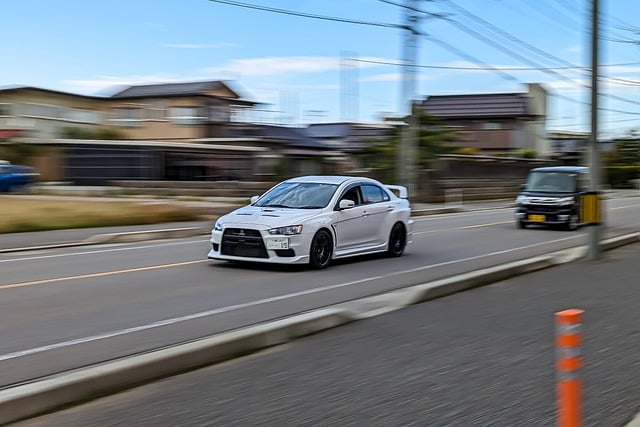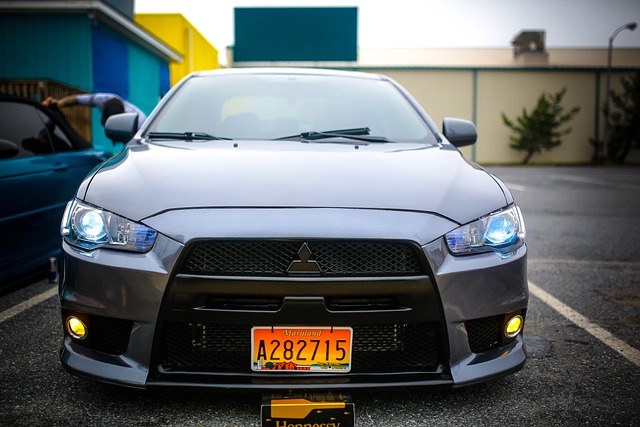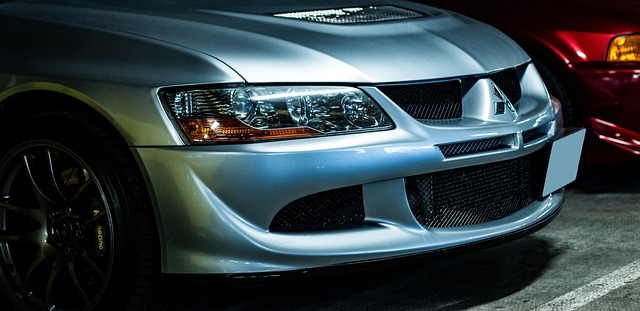When thinking about buying an automobile, it’s important to look into its history to understand the highs and lows of manufacturing. Understanding the best and worst years for Mitsubishi automobiles may have a big impact on the ownership experience. Let’s look at the highs and lows of Mitsubishi’s manufacturing history so that future purchasers may make educated judgments.

Best years:
The 2008 Mitsubishi Lancer The 2008 Lancer is a standout among Mitsubishi models due to its sporty look, nimble handling, and price. With the debut of the Lancer Evolution X version, fans were treated to thrilling performance and cutting-edge technology, making it a popular choice among small car lovers.
2014 Mitsubishi Outlander: Drivers were delighted by the Outlander’s large cabin, smooth ride, and optional third-row seating. With better fuel economy and additional safety features, it remains a strong contender in the competitive SUV market.
2017 Mitsubishi Mirage The 2017 Mirage is regarded as one of Mitsubishi’s greatest because to its outstanding fuel efficiency, inexpensive price, and small dimensions. It caters to budget-conscious consumers looking for a dependable and economical commuting car.
Worst years:
2002 Mitsubishi Lancer: Despite its sleek appearance and low price, the 2002 Lancer had reliability concerns, including gearbox and electrical issues. Buyers should be cautious while selecting this model year.
2011 Mitsubishi Outlander Sport: Despite the Outlander Sport’s beautiful design and adaptable interior, the 2011 model year garnered criticism for its poor performance, mediocre inside materials, and obsolete electronics. Potential purchasers might look at several model years for a more enjoyable ownership experience.
2007 Mitsubishi Eclipse: Despite its sleek design and strong engine choices, the 2007 Eclipse lagged behind its competition in terms of dependability and general quality. Buyers looking for a sporty coupe may consider other alternatives from Mitsubishi’s inventory.

Additional insights:
In addition to the highlighted best and worst years, various other variables might influence the ownership experience of Mitsubishi automobiles.
Long-Term Reliability: While certain model years may have a reputation for reliability concerns, it is critical to examine Mitsubishi automobiles’ long-term dependability. Conducting extensive research on customer evaluations, dependability ratings, and owner comments may assist discover trends and possible issues with certain model years.
Technology and Features: Newer model years often include advances in technology, safety features, and convenience choices. Buyers should balance their desires for technology and functionality with their economic limits. It’s crucial to emphasize features that increase safety, comfort, and overall driving experience.
Resale Value: Prospective purchasers should carefully consider the resale value of Mitsubishi automobiles for various model years. Vehicle condition, mileage, maintenance history, market demand, and depreciation rate are all factors that impact resale value. Buyers should examine market trends as well as the popularity and reputation of the particular Mitsubishi model to determine its resale value.
Certified Pre-Owned Options: For customers interested in older Mitsubishi models, looking into certified pre-owned (CPO) cars might provide additional piece of mind. CPO programs often feature comprehensive inspections, extended warranties, and other advantages, making them an appealing choice for purchasers looking for dependability and certainty.
Ownership Costs: In addition to the original purchase price, purchasers should consider insurance premiums, maintenance charges, fuel efficiency, and repair costs. Conducting a complete cost analysis may assist consumers in determining the overall affordability and value proposition of Mitsubishi automobiles for individual models.
Explore Mitsubishi’s Evolution:
Understanding Mitsubishi’s progress throughout time may give further perspective for determining the best and worst model years. Mitsubishi, being one of the world’s oldest automotive manufacturers, has seen considerable changes in design, engineering, and manufacturing methods, which have influenced vehicle quality and performance.
In recent decades, Mitsubishi has stressed innovation and technological integration, resulting to breakthroughs in fuel economy, safety features, and driver-assistance systems throughout its portfolio. Newer model years often benefit from these innovations, providing better dependability, performance, and overall driving experience than previous incarnations.
Mitsubishi has also increased its car lineup to satisfy shifting customer tastes and market needs. Mitsubishi has a varied choice of alternatives to suit to various lifestyles and driving demands, including small cars and SUVs as well as electric and hybrid vehicles.
Regardless of these developments, it is important to recognize that no carmaker is immune to periodic setbacks or troubles with certain model years. Manufacturing problems, design flaws, and component failures may all have an influence on the dependability and reputation of a vehicle, independent of the brand’s overall track record.
Prospective purchasers might develop confidence in Mitsubishi’s capacity to provide dependable and pleasurable automobiles by taking into account the company’s continual dedication to innovation, quality improvement efforts, and customer feedback. Conducting extensive research, getting expert guidance, and testing different model years will assist consumers in making well-informed judgments and selecting Mitsubishi automobiles that meet their expectations and preferences.
As Mitsubishi continues to develop and enhance its cars, consumers can anticipate a sustained emphasis on offering quality, performance, and value throughout its product range. Whether you want a vintage model year or the newest innovations, Mitsubishi has a wide choice of alternatives to fit your interests and driving inclinations. Read more

Exploring Nissan Vehicles Best and Worst Years
Frequently Asked Questions (FAQ) regarding Mitsubishi Vehicles: Best and Worst Years
1. What criteria decide which years are best and worst for Mitsubishi vehicles?
Reliability, performance, safety features, technical breakthroughs, and customer feedback all have an impact on the best and worst years for Mitsubishi vehicles. Model years with few reported troubles, increased features, and excellent reviews are often considered the greatest, whilst those with recurrent problems or substantial defects may be viewed as the worst.
2. How can I determine the best and worst years for a certain Mitsubishi model?
Consumer evaluations, dependability ratings, and industry studies may help you determine the best and worst years for a certain Mitsubishi model. Furthermore, visiting automobile forums, asking advice from experienced owners, and test-driving several model years may give useful information on their performance and dependability.
3. Are there any Mitsubishi models that are noted for providing consistent quality throughout all model years?
While several Mitsubishi models, such as the Mitsubishi Outlander and Mitsubishi Mirage, have acquired reputations for dependability and consistent quality, it is critical to assess each model year separately. Design modifications, technical improvements, and manufacturing procedures all have an impact on a vehicle’s overall quality and performance, even within the same model range.
4. What factors should I consider when acquiring a used Mitsubishi vehicle from a given model year?
When acquiring a used Mitsubishi, evaluate the mileage, maintenance history, vehicle condition, and any known concerns with the model year. Researching the vehicle’s VIN (Vehicle Identification Number) history, getting a pre-purchase check from a skilled technician, and reading maintenance records may all help you determine its general condition and dependability.
5. Are there any frequent faults or recalls related to certain Mitsubishi model years?
Mitsubishi, like other automakers, has issued recalls for certain model years owing to safety issues, manufacturing flaws, or component failures. Checking for open recalls on the National Highway Traffic Safety Administration (NHTSA) website and keeping updated about frequent concerns identified by owners and automotive specialists might assist uncover possible problems linked with particular Mitsubishi model years.
6. How can I assure a great ownership experience with a Mitsubishi vehicle, regardless of model year?
To guarantee a great ownership experience with a Mitsubishi vehicle, prioritize regular maintenance, adhere to prescribed service intervals, and resolve any concerns as soon as possible. Stay up to date on vehicle recalls and service bulletins, communicate openly with your dealership or service facility, and drive responsibly to extend the life and dependability of your Mitsubishi vehicle.
7. Can I anticipate improvements in newer Mitsubishi models over previous ones?
In general, newer Mitsubishi models integrate technological breakthroughs, safety features, and overall design improvements over prior ones. Upgraded infotainment systems, greater driver-assistance capabilities, increased fuel economy, and revised driving dynamics are some of the potential enhancements. However, it is critical to investigate certain model years to determine the degree of these enhancements and how they may affect your driving experience.
8. How can I verify the dependability of a Mitsubishi vehicle for a given model year?
Historical performance statistics, user ratings, and expert assessments are all aspects to consider when determining the dependability of a Mitsubishi vehicle for a certain model year. Websites and magazines that specialize on automobile reliability ratings, such as Consumer Reports and J.D. Power, may give significant information about Mitsubishi cars’ long-term dependability and quality. In addition, consulting owner forums and online groups may provide firsthand descriptions of owners’ experiences with various model years.
9. Are there any maintenance suggestions or typical concerns to be aware of while owning a Mitsubishi vehicle?
Regular maintenance is essential for the durability and dependability of any vehicle, including Mitsubishi models. Following the manufacturer’s suggested service plan for oil changes, fluid checks, tire rotations, and other basic maintenance jobs is critical. Additionally, being proactive in correcting common concerns such as brake wear, battery health, and suspension components may help avoid more serious problems in the future. Consult the owner’s handbook and get advice from professional technicians for helpful maintenance recommendations unique to your Mitsubishi model.
10. How can I figure out the resale value of a Mitsubishi vehicle for a given model year?
Several variables determine the resale value of a Mitsubishi automobile for a certain model year, including its general condition, mileage, maintenance history, market demand, and depreciation rate. Websites such as Kelley Blue Book (KBB) and Edmunds provide tools and resources for estimating car resale value using a variety of factors. Additionally, maintaining updated about market trends and taking into account the popularity and reputation of the particular Mitsubishi model may assist determine its resale potential.